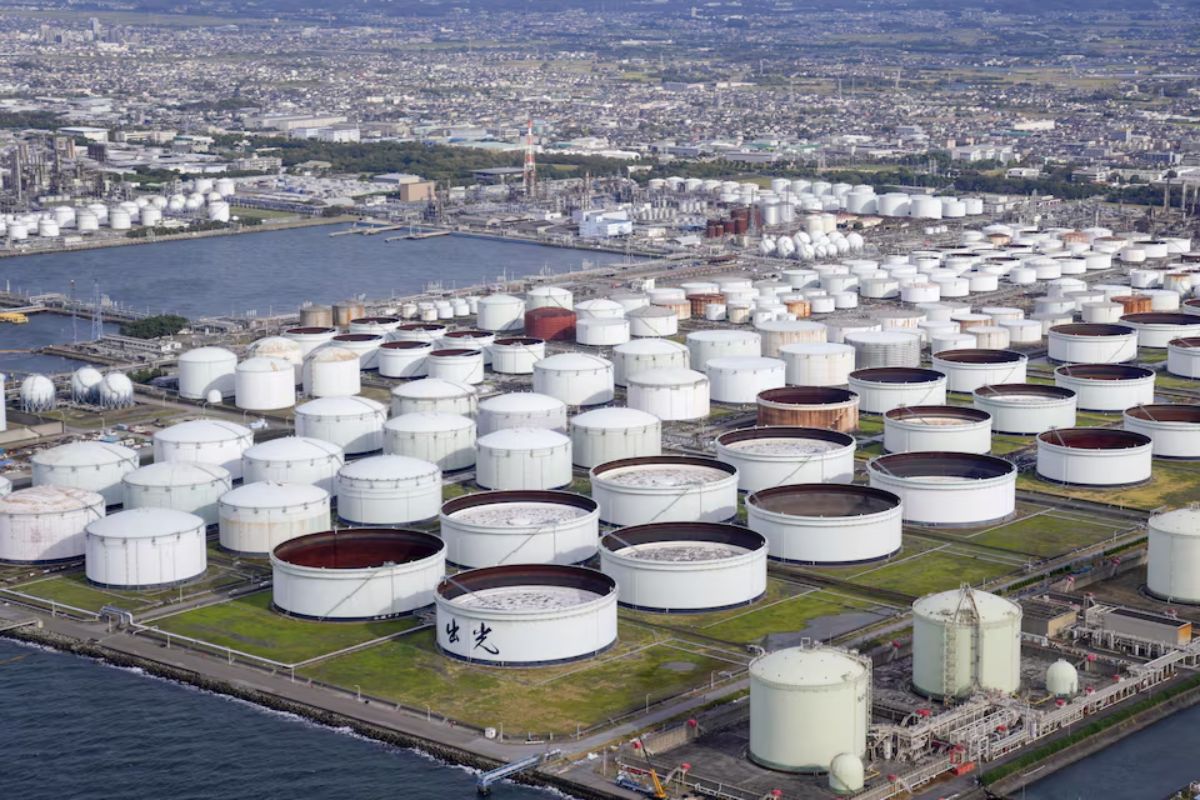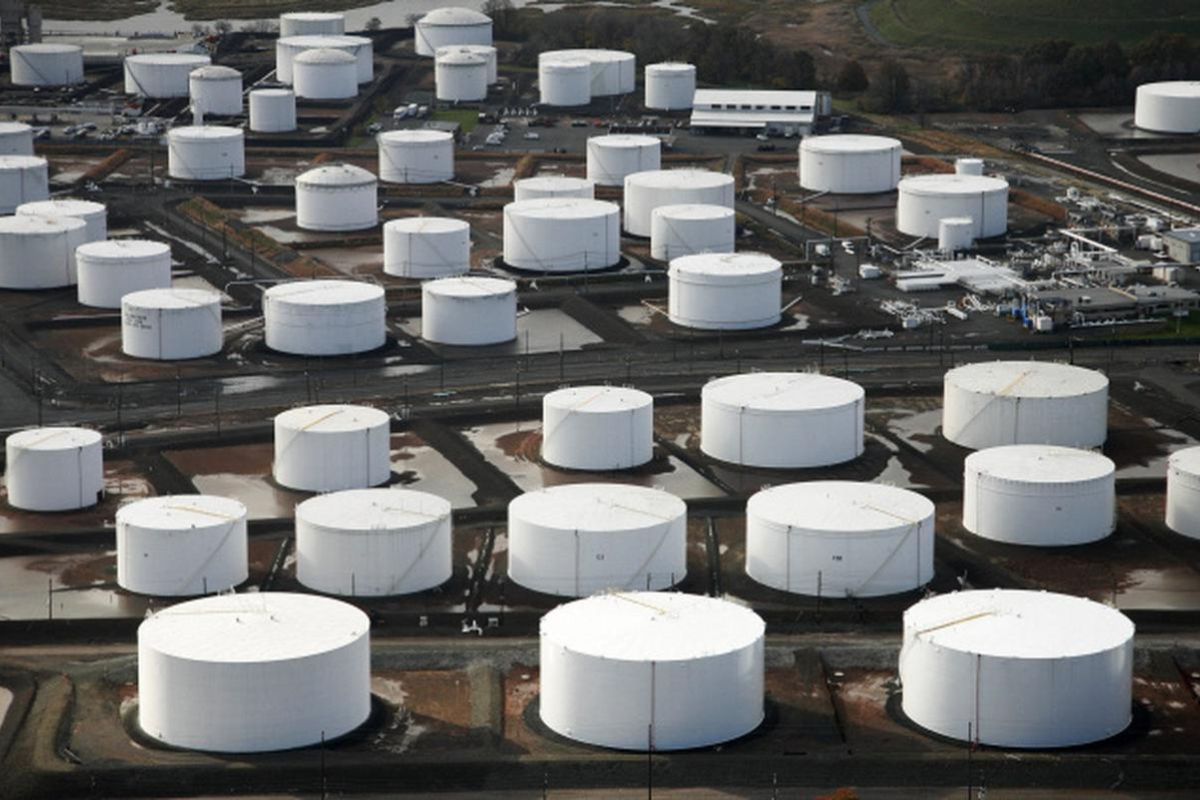Oil Prices Surge: The surge in oil prices is nothing short of spectacular, driven by supply risks that are propelling the market to new heights. Recent attacks on Russian energy infrastructure have added fuel to the fire, with Brent crude oil futures soaring to $85.81 a barrel and U.S. WTI climbing to $81.53. This spike in prices comes with a heightened risk premium, causing concerns and injecting uncertainty into the market. The events unfolding underscore the complex interconnectivity of global energy markets.
The impact of the Russian infrastructure attacks on oil markets is significant, with disruptions in supply chains and geopolitical tensions threatening regional stability. These developments signal a shifting landscape in the oil market dynamics, with the U.S. Federal Reserve’s recent meeting outcomes and potential interest rate cuts shaping future outlooks. The current scenario is just the tip of the iceberg in this rapidly evolving market scenario.
Oil Prices Rise on Tightening Supply and Russian Infrastructure Attacks
The surge in oil prices, driven by tightening supply and recent attacks on Russian energy infrastructure, has sparked concerns and added a risk premium to the market. This sudden uptick in prices, with Brent crude oil futures hitting $85.81 a barrel and U.S. WTI climbing to $81.53, showcases the fragility of the global oil market.
The attacks on vital Russian refineries have not only disrupted supply chains but have also injected a sense of uncertainty and fear into an already volatile market. Vandana Hari’s assessment of the situation, highlighting the additional $2-$3 risk premium per barrel due to recent attacks, underscores the seriousness of the issue at hand.
As tensions escalate and risks mount, investors and industry experts are left grappling with the implications of these supply risks. The recent events serve as a stark reminder of the interconnectedness of global energy markets and the potential ripple effects that can result from targeted attacks on key infrastructure.
ALSO READ: Oil Prices Soar on Surging US Fuel Demand Amid Lingering Supply Worries
Impact of Russian Infrastructure Attacks on Oil Markets
With Russian refineries under siege and global oil supply chains feeling the strain, the impact of these attacks on the oil markets reverberates with growing intensity. The recent strike at the Slavyansk refinery in Kasnodar has highlighted the vulnerability of Russian infrastructure, sending shockwaves through the oil industry.
- Supply Disruption: The attacks have idled around 7% of Russian refining capacity in the first quarter, causing disruptions in the supply chain for crude varieties destined for key markets like China and India.
- Global Implications: The uncertainty stemming from these attacks adds another layer of complexity to an already volatile global oil market, leading to increased price speculation and market fluctuations.
- Geopolitical Tensions: The escalation of tensions in the region not only threatens Russian oil production but also raises concerns about the stability of oil flows from other major producers in the area.
- Investor Reaction: Investors are closely monitoring the situation, with many adjusting their strategies in response to the heightened geopolitical risks, further contributing to market unpredictability.
Market Dynamics and Future Outlook
Traversing the tumultuous waters of oil markets demands a keen eye for emerging trends and a strategic approach to capitalizing on shifting dynamics. As investors eagerly await the U.S. Federal Reserve’s meeting outcome this Wednesday, the potential for interest rate cuts looms large, with the hopes of stimulating demand in the U.S., a key player in the global oil consumption landscape. Recent price increases in both Brent and WTI futures, though rangebound, have seen a boost from a bullish demand report from the International Energy Agency (IEA) and heightened U.S. fuel demand. The IEA’s forecast of a minor supply deficit for the year serves as a stark reminder of the evolving dynamics within international oil markets.
| Emerging Trends | Strategic Approach |
|---|---|
| Lower Interest Rates Stimulating US Demand | Capitalize on Potential Price Boosts |
| IEA’s Bullish Demand Report | Monitor Market Reports Closely |
| Increased US Fuel Demand | Diversify Portfolio Appropriately |
| IEA’s Prediction of Supply Deficit | Prepare for Potential Price Volatility |
News in Brief
Oil prices surged as attacks on Russian energy infrastructure heightened supply risks. Brent crude hit $85.81 a barrel, and U.S. WTI climbed to $81.53, reflecting market fragility. Vandana Hari noted a $2-$3 risk premium per barrel due to attacks. Disruptions at Russian refineries, like the Slavyansk refinery, idled 7% of capacity, impacting global supply chains. Geopolitical tensions escalated, raising concerns about stability. Investors await the U.S. Federal Reserve’s meeting, anticipating interest rate cuts to stimulate demand. IEA’s bullish demand report and rising U.S. fuel demand hint at market dynamics, with a forecasted supply deficit. Strategic approaches include capitalizing on potential price boosts and monitoring market reports for diversification.
Our Reader’s Queries
Q. How does supply affect the price of oil?
A. Changes in oil prices are influenced by the dynamics of supply and demand. Typically, when oil supply rises, prices tend to decline, whereas a decrease in supply leads to price increases. Similarly, a decrease in demand usually results in lower prices, while an increase in demand leads to price rises.
Q. What is the cause of rising oil prices?
A. Crude oil prices tend to rise when major countries experience higher demand, typically occurring at the start, middle, and end of the year. During winter, which spans the beginning and end of the year, oil prices often increase as consumers require more oil for heating their homes and businesses.
Q. How does an increase in oil prices affect aggregate demand and supply?
A. A rise in oil prices usually results in a shift of income from oil-importing nations to oil-exporting ones. This income reduction prompts rational consumers in importing countries to curb their consumption spending, thereby decreasing aggregate demand and output.
Q. What are the factors affecting oil supply?
A. Various factors influence the demand and supply of oil, including oil consumption levels, reserves, global exchange rates, environmental concerns, political dynamics, and speculation in financial markets.



